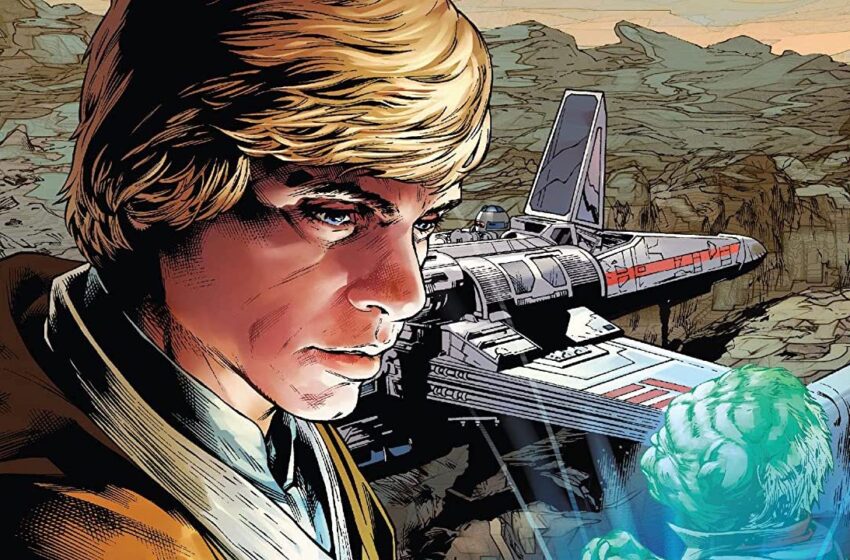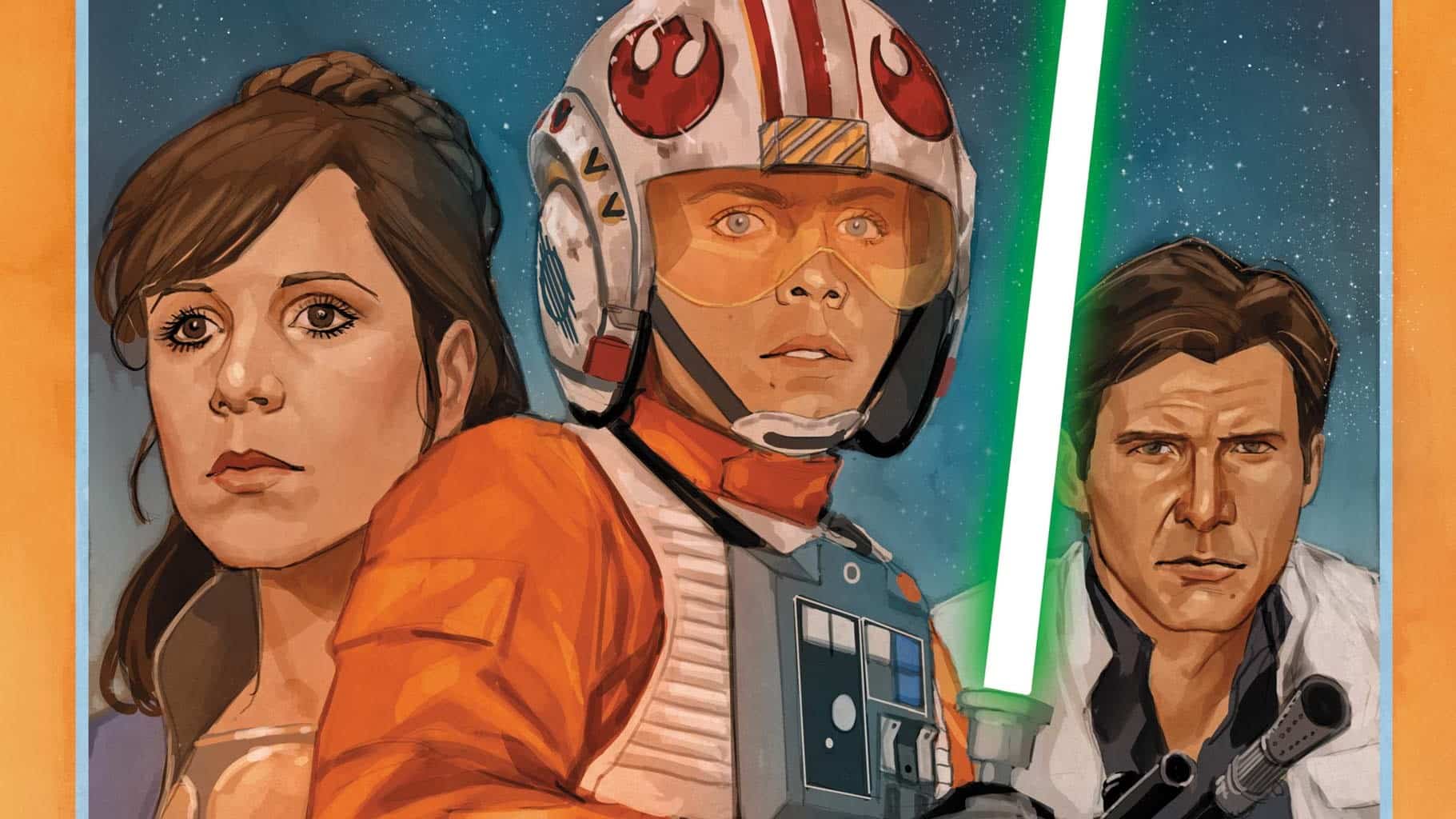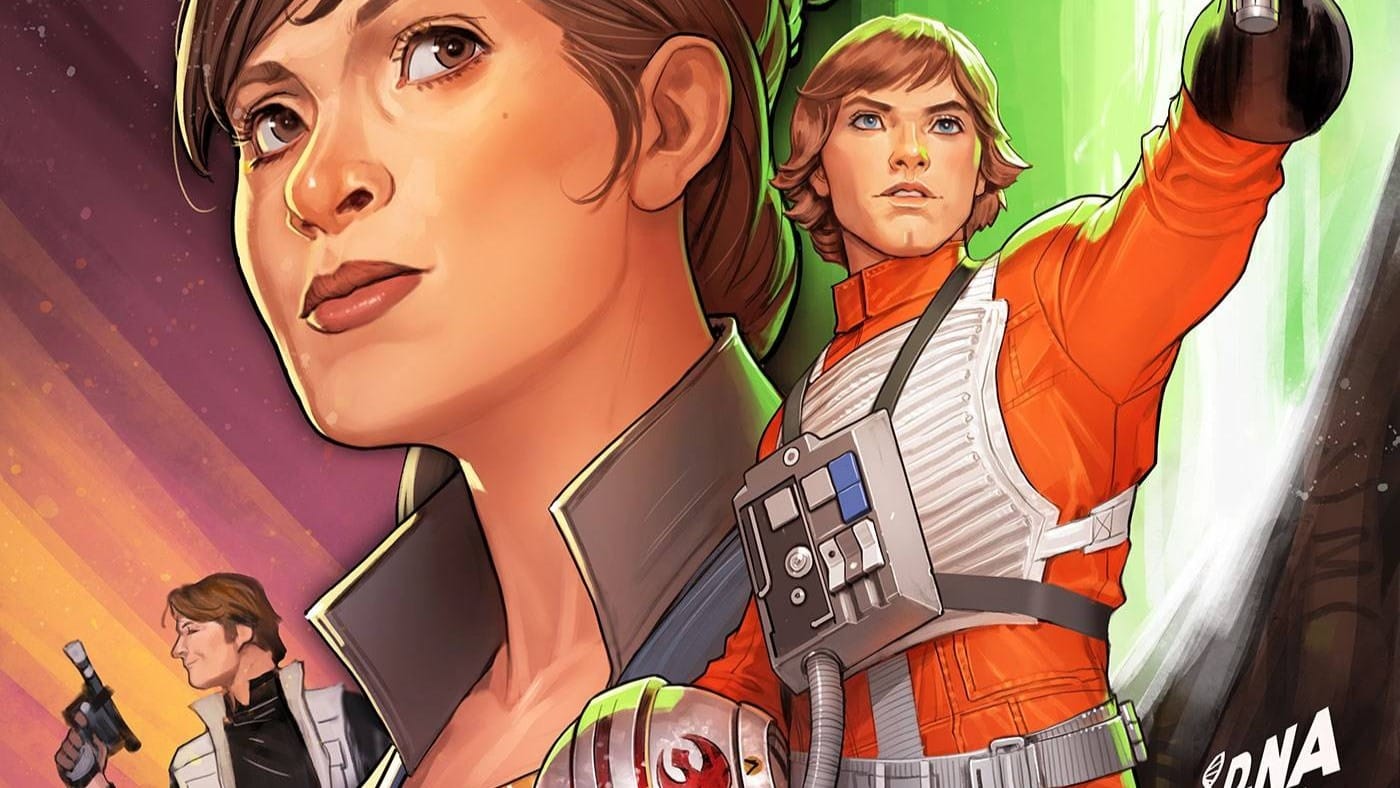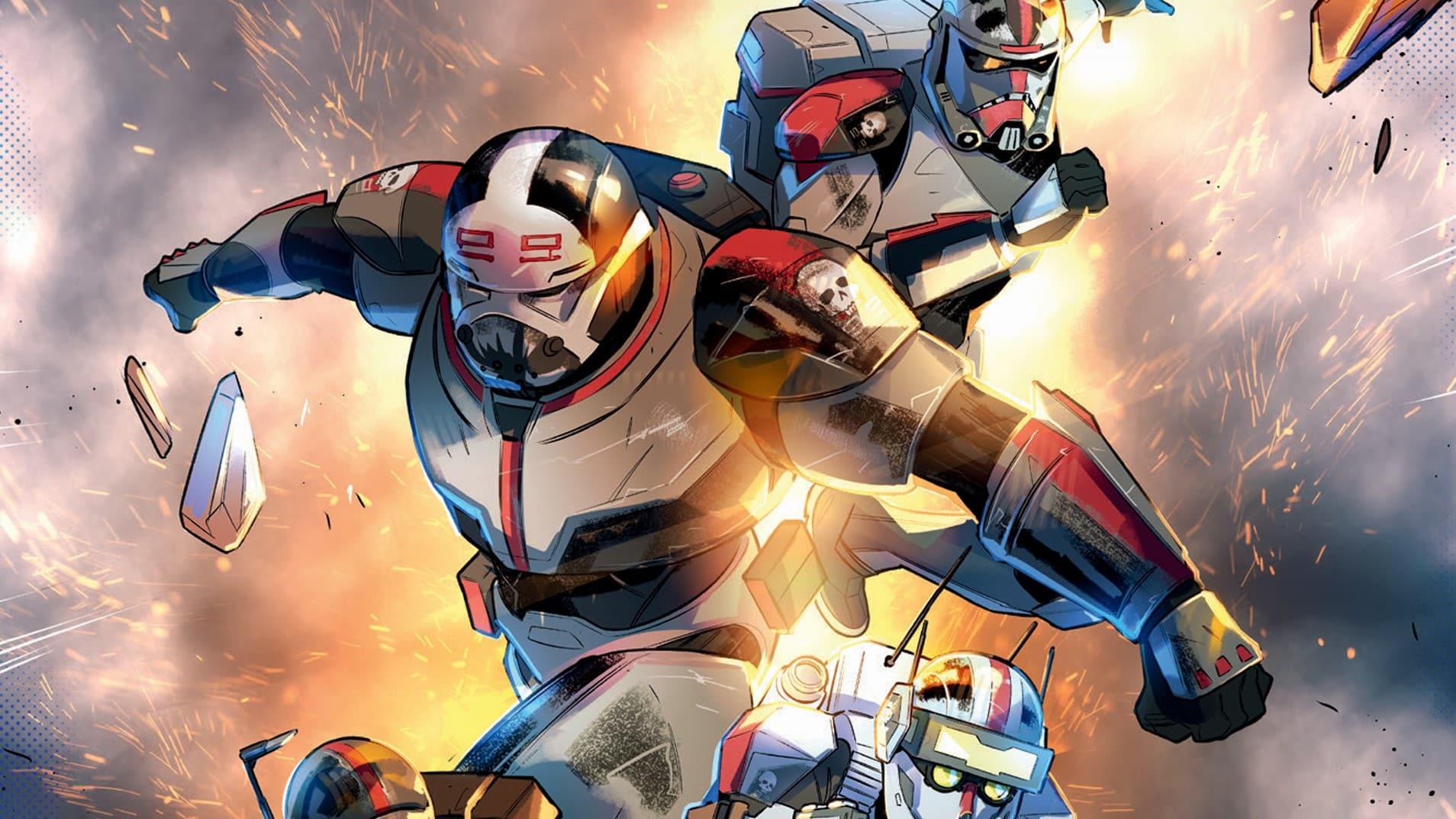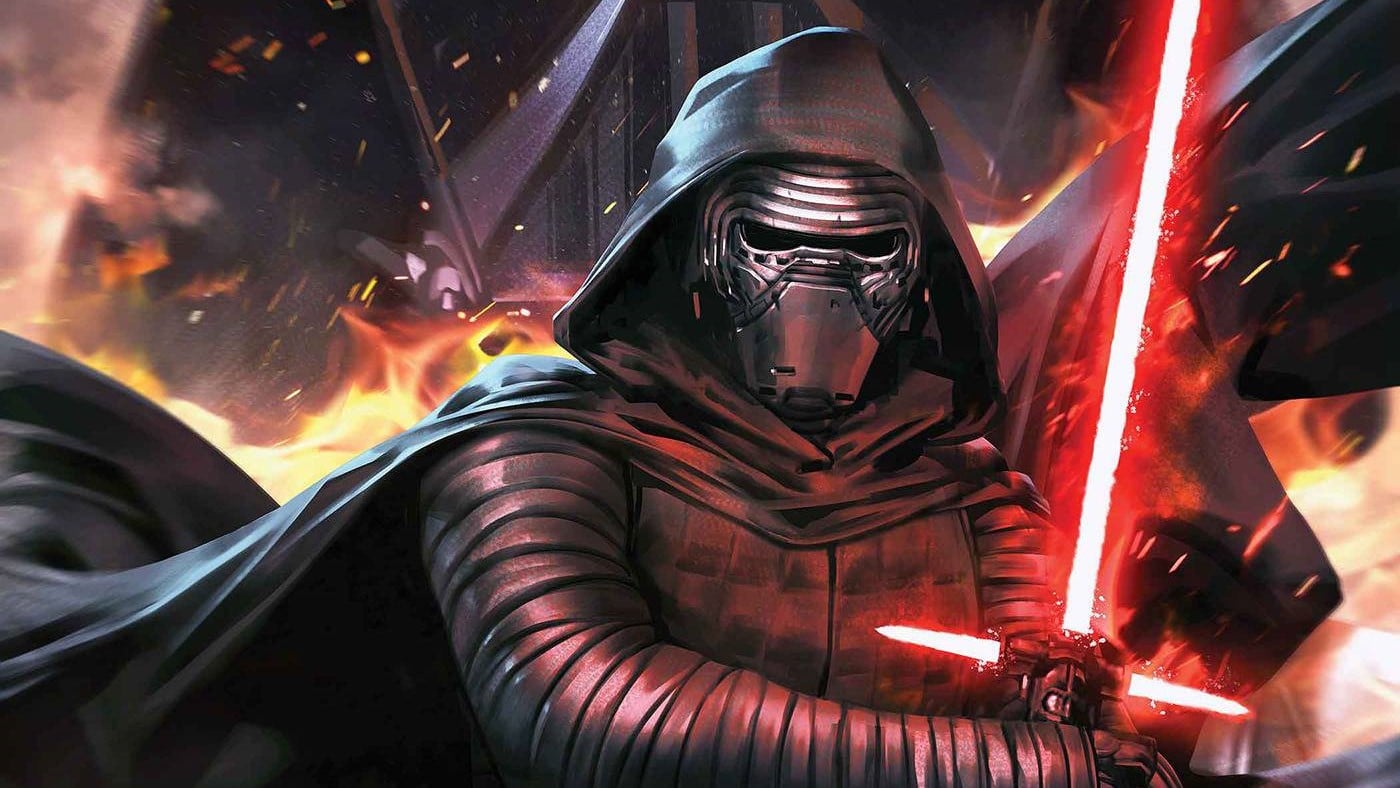Luke’s deep dive into the past leads to an encounter with a Force Ghost of a different sort in Star Wars #20, written by Charles Soule, drawn by Marcos Castiello, colored by Rachelle Rosenberg and lettered by Clayton Cowles.
After his newfound dedication to continue his Jedi training led Luke on a Jedi Greatest Hits tour, he concluded last issue on a triumphant note with the acquisition of a holocron hosted by no less than his estranged master himself, Yoda. But this issue serves to remind Luke that he’s a character in a serial adventure story, so the path he’s on isn’t a direct one, and that there are no easy outs, leading him to view his quest – and his relationship to the notion of being a Jedi – from a different perspective.
As this issue opens, Luke’s previous issue-ending jubilation has quickly burned out, as he finds Holocron Yoda does little more than impart platitudes Luke has already learned from the real deal. He is at his whiniest in these opening pages, calling back to the character’s very first cinematic moments, as angry at the lack of new info from the holocron as his one-time inability to pick up those power converters at Tosche Station. This more petulant Luke is a striking contrast to the more vulnerable and plaintive Luke of this volume of the series, one chastened by his encounter with Darth Vader on Cloud City. In a fit of pique, he almost tosses the holocron off a cliff, but instead decides to, effectively, skip to the next track, at which point, Holocron Yoda causally name drops a location of special Jedi import that Luke and Artoo haven’t visited yet.
One hyperspace jump/page turn later, Luke arrives on the world of Gazian, hoping THIS world will hold the answers he seeks after all his previous stops came up empty. Gazian is a world populated by large mushrooms which soon prove to be psychedelic, as Luke finds himself interacting with a spiritual remnant of Elzar Mann, a Jedi of the High Republic era. Their ensuing conversation proves to be enlightening for both Luke and the readers.
For one, it allows Luke to be honest about his feeling towards becoming a Jedi: his admission that much of his frustration of late stems from the difficulty of being the sole representative of all Jedi in the galaxy relative to being simply “the hero of the Rebellion”, which serves as a catchy summation of the tonal difference between the first volume of this iteration of the series and its current one. It also does a lot to humanize Luke, and make his earlier temper tantrum more understandable: his quest is about more than finding someone who can teach him to fight better with a laser sword, it’s about figuring out what it even means to be this thing he’s trying to become.
At the same time, in his discussion of the Jedi, Elzar puts to words something that has long been true across the Star Wars canon: that the Jedi tend to serve in the manner needed of them at any given time. When the galaxy needs warriors, the Jedi are warriors. When it needs teachers, they become teachers. Not only does this help Luke overcome some of his frustration and anxiety – if he is the last of the Jedi, he need not be beholden to whatever they were before but whatever the galaxy needs him to be at this moment – it also functions as an in-universe acknowledgement of how the portrayal of the Jedi collectively has shifted depending on the particular needs of any given storytelling venture.
Obviously, this is a very talky issue – most of the action comes in the form of brief snippets serving to underscore Elzar’s argument – and unfortunately, Marcos Castiello’s art stumbles when it comes to livening up the talky bits, making the art the weakest element of the issue. Characters suffer from dead-eye syndrome (in which their pupils randomly disappear or become filled with white) and are overly rendered, their faces covered with so many hash lines they appear older or craggier than they actually are. The staging is also stiff, with the storytelling occasionally awkward: it’s not always clear, for example, that the cutaways from Elzar’s demonstration to the entranced Luke even are cutaways. All in all, in terms of the art, this issue is a letdown.
Fortunately, there’s enough intriguing ideas being bandied about by Charles Soule here to make up for it, but it’s hard not to feel like there was a missed opportunity to really sell those ideas via the art. With next issue seemingly poised to follow up with Shara Bey (who has been hiding on board a Star Destroyer for a really long time at this point), Luke’s latest Jedi Quest appears to have reached an end (for now). And while it would be easy to get frustrated, like Luke at the beginning of this issue, about the lack of actionable developments in that plotline, there is at least a sense by the end of this issue that the Luke coming out of the story is different – not necessarily better trained, but more knowledgeable and self-assured – than the one who went into it.
Force Facts
- In the grand spirit of Star Wars cross-promotion, Elzar Mann is also one of the central figures in the High Republic publishing initiative, the latest volume of which was released a week before this issue.
- One of the places Elzar shows to Luke appears to be Ahch-To, the island temple home of Luke in The Last Jedi.
- If Gazian is just a world populated by mushrooms and the desiccated copies of the people who have visited there, I’m deeply curious who maintains the little platform hovering over the fungi on which Luke parks his X-wing.
Austin Gorton also reviews older issues of X-Men at the Real Gentlemen of Leisure website, co-hosts the A Very Special episode podcast, and likes Star Wars. He lives outside Minneapolis, where sometimes, it is not cold. Follow him @austingorton.bsky.social.

